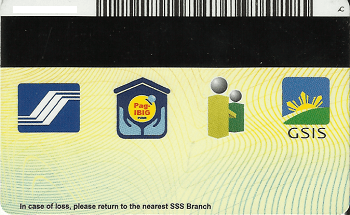As with any form of social security, identification is crucial for transactions and other processes that members undergo.
SSS is no different, and the SSS ID card is central to everything members have to do in order to avail of the benefits that social security in the Philippines can give them.
This is for new SSS members who are looking to take their membership further by getting familiar with the SSS ID card that is issued to all SSS members.
From SSS ID to UMID
The SSS used to have its own separate ID card, but it has now integrated its system with other similar government agencies that resulted in the creation of the UMID.
The Unified Multipurpose ID (UMID) is an integrated ID solution for all SSS, GSIS, Pag-ibig, and Philhealth members.
It lets them not have to carry multiple ID cards and documents around, only requiring you to carry the UMID for just about every transaction you have to do in those 4 organizations.
Since they have been transitioning to using the UMID over a separate ID card for SSS, it is recommended that you look towards getting the UMID yourself.
They both entail the same requirements and have pretty much the same function within SSS itself anyway, so there is no reason to refuse it.
If you are not a member of SSS yet, then you should get your SSS number and start contributing in order to later avail of the benefits that come with social security.
SSS ID or UMID as a Valid ID
The SSS ID itself is a valid ID that you can use for life. It has no expiration date, much like the Voter’s ID, so you can make use of it for various other processes that require identification without having to worry about whether it will be accepted or not.
The modern SSS ID can also be used on SSS kiosks to access your account so you can track your contributions and other transactions through it. It is much like your passport, driver’s license, TIN card, and so on in that it can be used to apply for other IDs as well.

How to Apply for UMID Card
Application for a UMID is simple enough.
Bring either your driver’s license, passport, PRC license, or seaman’s book to the nearest SSS branch.
If you do not have any of the aforementioned documents, then you can bring 2 of either your SSS ID (if you already have one), GSIS eCard, Voter’s ID, Senior Citizen ID, NBI Clearance, Postal ID, School ID, Company ID, TIN card, TOR, OWWA, Pag-ibig data form, birth certificate, baptismal certificate, marriage certificate, Philhealth ID, barangay clearance, life insurance policy, ATM card bearing your name, alien certificate of registration (I-Card), certificate of nationality/naturalization, or certificate from the Office of Muslim Affairs.
Upon bringing these requirements to your nearest SSS branch office, you should then have your fingerprints and signature taken, get your acknowledgment slip upon finishing registration, and wait for your UMID to arrive.
You can also apply for your UMID online, but you still have to go to the SSS branch to complete the process.
Again, to get your own UMID, go to the GSIS Enrollment Center if you are a government employee, or to your nearest SSS branch if you are a private employee or self-employed. Submit a completed UMID application form and 2 valid IDs, both photocopy and original.
Submit a completed UMID application form and 2 valid IDs, both photocopy and original.
After verifying if you are currently an active member of SSS (or GSIS, Pag-ibig, Philhealth), they will then take your photograph, signature, and fingerprints.
You then receive your application slip with the date of receipt, at which time you should receive your UMID via mail, which usually takes around 2 weeks.
Click here to read: SSS Registration: How to be an SSS Member






How much is the cost for applying the UMID SSS?